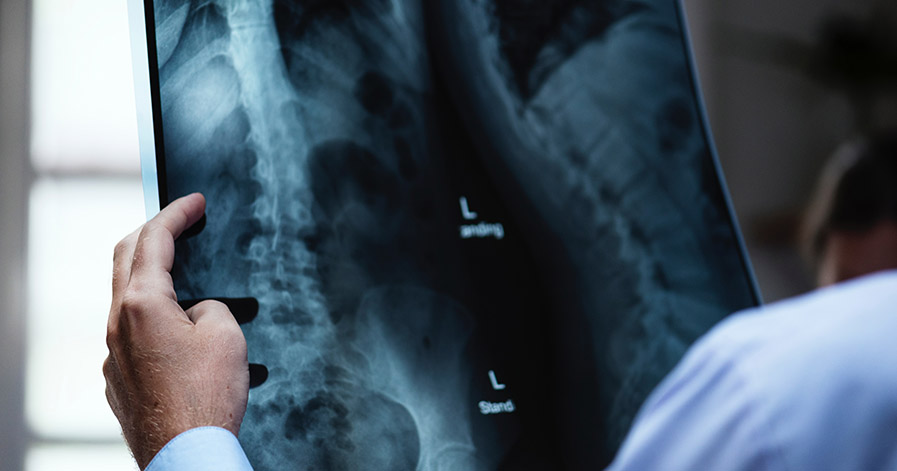How to Become a Radiologist
Radiology is the branch of medicine that deals with the reading, interpretation, and diagnosis of patients using radiography, tomography (CT), ultrasound, and magnetic resonance imaging. Radiology is a specialty that medical doctors choose once they have completed medical school.
A radiologist is a doctor who focuses their practice in reading and interpreting medical imaging, such as X-rays and magnetic resonance imaging (MRI), to diagnose and treat illnesses or injuries.
The first step in becoming a radiologist is to complete medical school. During med school, students and residents will complete two years of rotations in various departments: emergency medicine, surgery, pediatrics, cardiology, respiratory, radiology, and more. There are dozens of specialties to choose from.
Once you have secured your license to practice, and you’ve decided on radiology, there are four-year programs to become a licensed radiologist. If you want to know how to become a radiologist, keep reading.
Education Paths for Radiology
According to Study.com, after graduating from med school, an ambitious radiology student must do four years of radiology residency, including clinical rotations in the sub-specialties of radiology, attending lectures, and conducting research. There are further specialties that require 1–2 years of fellowship training after residency because they use advanced equipment, wires, and catheters to perform exams and diagnostic procedures.
Because of the emergence of new technologies, radiologists must participate in continuing education so that tests can be performed safely and accurately.
One of the premiere programs in the United States is at the Indiana University School of Medicine. In fact, the school receives an average of 600 applications each year for just 11 spots. Doctors in the radiology program must complete coursework and rotations in the following:
- Body imaging
- Breast imaging
- Chest radiology
- Emergency radiology
- Interventional radiology
- Neuroradiology
- Nuclear medicine
- Pediatric radiology
- AIR
After the primary radiology program, doctors can choose to apply for 1 of 13 positions in the IU School of Medicine Fellowship Program. The program provides advanced subspecialty education and clinical training for successful diagnostic radiology graduates. The programs move beyond the knowledge attained during residency and prepare radiologists to become experts in several areas of sub-specialization.
The fellowships available at the IU School of Medicine include the following:
- Neuroradiology
- Nuclear medicine/molecular imaging and therapeutics
- Pediatric radiology
- Vascular and Interventional radiology
- Advanced neuroradiology
- Body Magnetic Resonance Imaging
- Breast Imaging
- Cardiothoracic Imaging
- Head and Neck radiology
- Magnetic Resonance Imaging
- Musculoskeletal Imaging
- Pediatric Neuroradiology
- Trauma and Emergency radiology
In addition to achieving the title of radiologists, and possibly seeking a sub-specialty, all radiology doctors must keep up with current technology and techniques; as such, they are required to participate in continuing education.
Licensure
After a doctor has earned a medical license by passing the United States Medical Licensing Exam (USMLE) or the Comprehensive Osteopathic Medical Licensing Exam (COMLEX), radiologists get certification through the American Board of Radiology (ABR) or the American Osteopathic Board of Radiology (AOBR).
The ABR core exams are computer based, image rich tests taken after three years of residency training. The exam covers 18 subspecialty and modality categories. Candidates don’t just have to pass the exam overall; they must pass in each category as well.
There is also a Certifying Exam, taken approximately 15 months after diagnostic residency training; it includes four modules: Essentials of Diagnostic Radiology, and then three modules of clinical practice areas chosen by the candidate to fit their interests, experience, and training.
Day to Day
Your radiologist acts as an expert advisor to the doctor who sent you to the radiology department for testing. The radiologist aids the doctor in prescribing the appropriate examination, interpreting the radiological images, and allowing test results to provide direction for your treatment.
According to Radiologyinfo.org, radiologists also use the following:
- Treating diseases by means of radiation (radiation oncology) or image-guided therapeutic intervention (interventional radiology).
- Comparing medical images with other examinations or tests.
- Working in concert with referring physicians.
- Directing radiologic technologists in the proper performance of exams.
A radiologist's daily job duties include interpreting data gathered through imaging, sharing results with doctors and patients, writing reports, and explaining treatment risks, benefits, and alternatives to patients.
Most radiologists manage a team of imaging technicians and other assistants. Radiologists can stay current on the latest developments in radiology through online classes and other forms of continuing education.
Occupational Outlook for Radiology
Per the Bureau of Labor Statistics, the job outlook for radiologists over the next seven years is higher than normal at 13 percent growth. The median income is $208,000 annually, with more than 700,000 jobs coming available from now until 2026.
Radiologists can work in multiple medical facilities. They can work in primary care physician offices, hospitals, hospice facilities, research facilities, or academic facilities.
Conclusion
Radiology is a demanding but rewarding specialty in medicine. The competition for entry to medical schools for radiology residency is fierce and schools take only the best candidates.
The future outlook for employment is positive and the next generation of radiologists are in residency and/or fellowship right now.

